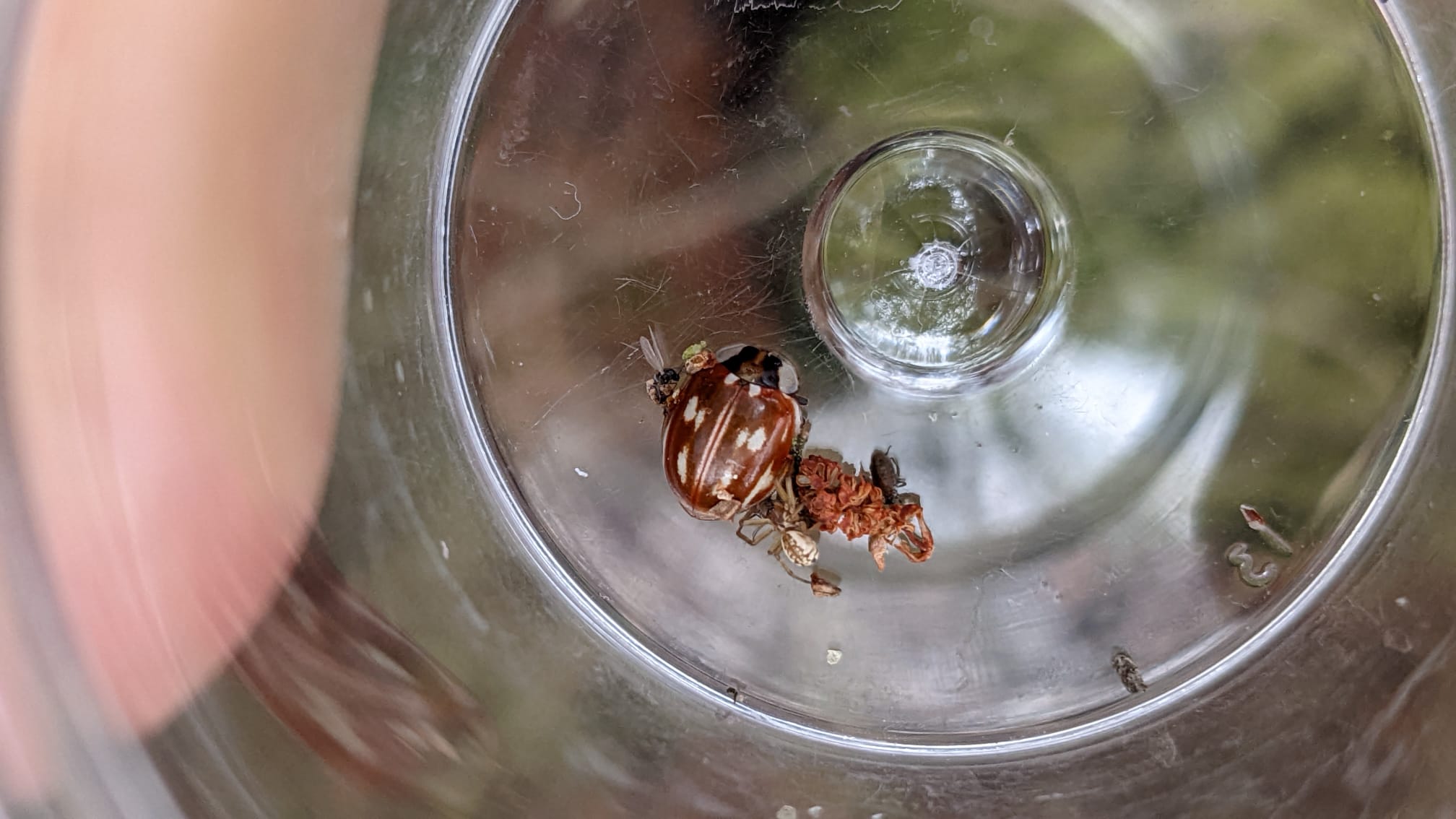Continuing this year’s Ladybird Year List and capturing records for the North East Ladybird Spot, the last few weekends have been spent admiring winter ladybirds conifers. Scots Pine, Larch, exotic Lodgepole and Black Pines, even the odd spruce.
Havannah Nature Reserve near Dinnington first and few visits to explore the site’s conifers turned up a good number of Pine Ladybirds (Exochomus qadripustulatus), with eight spotted on our first visit and six on our second. While the majority were found, rather fittingly, on pine, we also found a few overwintering on Gorse for the first time.
It was nice too to encounter the guttatopunctata form of 10-Spot Ladybird (Adalia decempunctata) hiding out in a branch tip.



Confessing an ulterior motive for our trip to Havannah, a spot of tree-tapping focused on more mature conifers produced not one but two Striped Ladybirds (Myzia oblongoguttata), an entirely new species for me!
Somewhat of a goldilocks ladybird, this species has a close association with Scots Pine but is seldom found on younger trees. Supposedly, these striking little insects overwinter at ground level so what they were doing on exposed branches in February, I don’t know.

Fast forward a week and on our second visit to Havannah, we managed to find a total of three Striped Ladybirds, with one in particular (shown in the video below) clearly energised by the sunny conditions.
Whilst at Havannah, it would have been rude not to survey some of the Gorse on-site for ladybirds too and, after fifteen minutes, we were rewarded with the beauty below, an Adonis’ Ladybird (Hippodamia variegata).
I can count on one hand the number of times I have seen this fairly elusive species, finding them previously only at Newcastle Great Park and Silverlink. With a distinctive pattern of white and black on the pronotum and spots concentrated towards the rear of the wing cases, they are rather lovely.

A few more highlights from the last couple of weeks and a quick visit to Iris Brickfield Park in Heaton turned up another new species for me in the form of this Red Marsh Ladybird (Coccidula rufa). One of the tiny, inconspicuous ladybirds, this species has a close association with wetland habitats where is commonly encountered on reeds, rushes and similar plants. You can imagine my surprise then to knock this one out of a pine tree while searching for its larger cousins!

Also in Iris Brickfield Park, a few stands of Stinking Iris provided a nice opportunity to look for some overwintering grassland ladybirds. Shaking the plants over a net, I was pleased to find four 22-Spot Ladybirds (Psyllobora vigintiduopunctata), a species I have only ever encountered in summer, usually on the mildewy leaves of Hogweed or Knapweed. I do love these vibrant little ladybirds.

Slightly further back in time now and a flying visit to Rising Sun Country Park in North Tyneside turned up my first Kidney-Spot Ladybird (Chilocorus renipustulatus) of the year sheltering in the upper branches of a wind-blown pine. Again, not a species I encounter very often at all!

Finally, at all of the sites listed above, by far the most numerous ladybird species was (as ever) the 7-Spot Ladybird (Coccinella septempunctata). Little needs said about this one…



Finds over the past few weeks have taken the ladybird year list to a total of thirteen species. Not bad for late February in North East England! Whilst there are certainly a few more ‘easy’ species to be found as we move into spring – 14-Spot, 24-Spot and the inconspicuous Rhyzobius litura – I am very much hoping to catch up with a few more elusive species too. Larch Ladybird should be found, with a little luck, as should Eyed and 11-Spot Ladybirds, at the very least…
